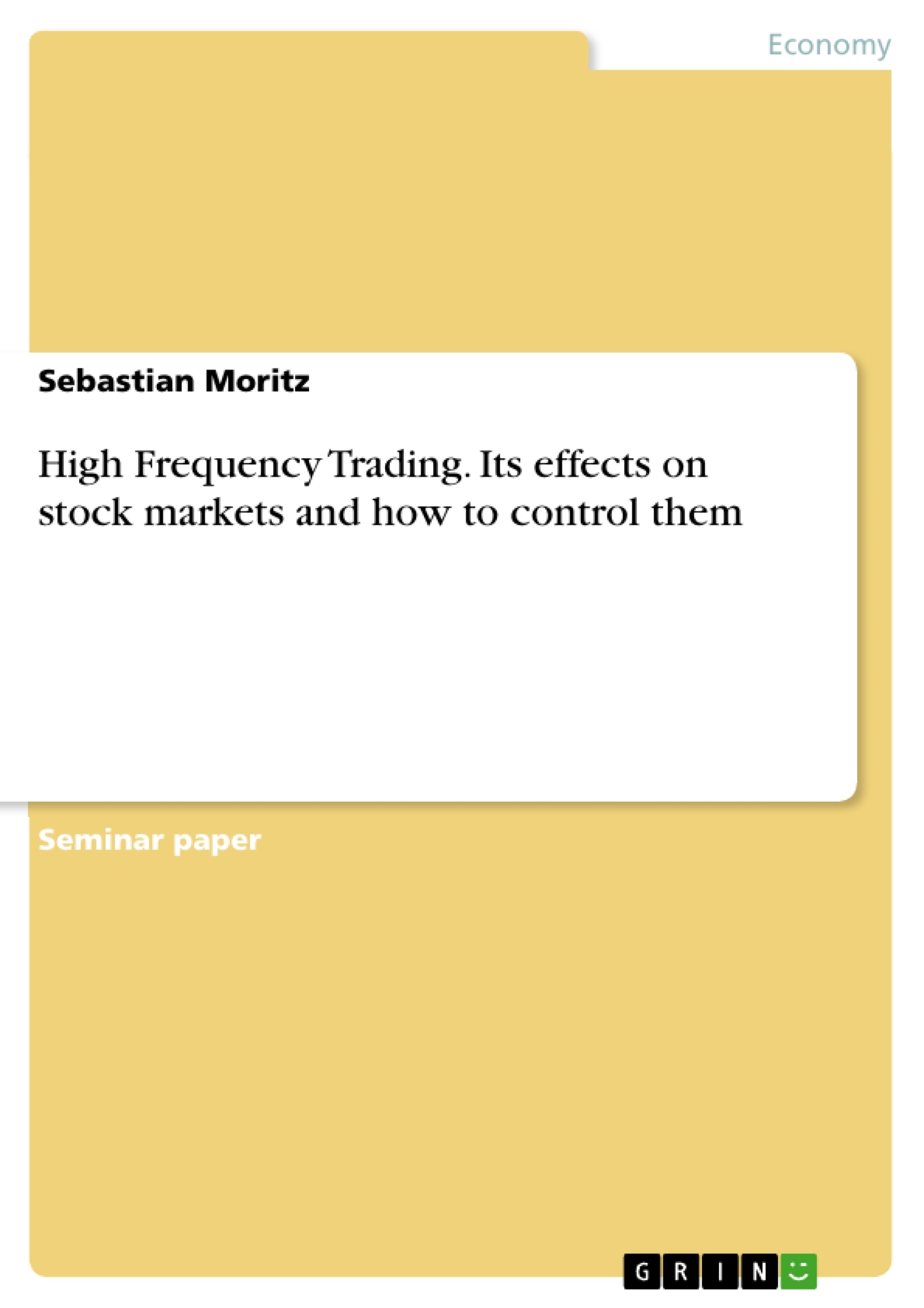This paper is discussing positive and negative aspects of so-called high-frequency trading activities on global stock markets.
Further, a recommendation on how to improve the current status quo will be provided.
Inhaltsverzeichnis (Table of Contents)
- High-Frequency Trading: Its Effects on Stock Markets and How to Control Them
- The Rise of High-Frequency Trading
- The Advantages of High-Frequency Trading
- The Disadvantages of High-Frequency Trading
- Controlling High-Frequency Trading
Zielsetzung und Themenschwerpunkte (Objectives and Key Themes)
This paper analyzes the growing prevalence and impact of high-frequency trading (HFT) on global stock markets. It explores the benefits, drawbacks, and potential risks associated with this form of trading, ultimately advocating for further regulatory measures to control HFT and ensure the stability and fairness of financial markets.
- The rise and impact of HFT on stock markets
- The benefits and risks of HFT
- The role of HFT in market manipulation
- The need for regulatory measures to control HFT
- The debate surrounding the impact of HFT on market liquidity and volatility
Zusammenfassung der Kapitel (Chapter Summaries)
- The Rise of High-Frequency Trading: This chapter introduces the concept of high-frequency trading and traces its evolution, highlighting the transition from human traders to computerized algorithms that execute trades at extremely high speeds. The chapter also discusses the factors contributing to the rise of HFT, such as the increasing availability of data and technological advancements.
- The Advantages of High-Frequency Trading: This chapter examines the potential benefits of high-frequency trading. It explores arguments that HFT increases market liquidity, reduces volatility, and improves price efficiency. The chapter also discusses how HFT contributes to greater competition in the market and provides traders with access to faster and more accurate information.
- The Disadvantages of High-Frequency Trading: This chapter explores the potential drawbacks and risks associated with HFT. It examines concerns related to market manipulation, the potential for flash crashes, and the unfair advantage it gives to high-frequency traders over traditional traders. The chapter also discusses the impact of HFT on market integrity and the potential for increased market volatility.
Schlüsselwörter (Keywords)
High-frequency trading, stock markets, liquidity, volatility, market manipulation, flash crashes, regulatory measures, algorithmic trading, co-location services, rebate arbitrage, front running, Dark Pools, price efficiency, information edge, market integrity, equity, stability, transparency.
- Citation du texte
- Sebastian Moritz (Auteur), 2018, High Frequency Trading. Its effects on stock markets and how to control them, Munich, GRIN Verlag, https://www.grin.com/document/421202



